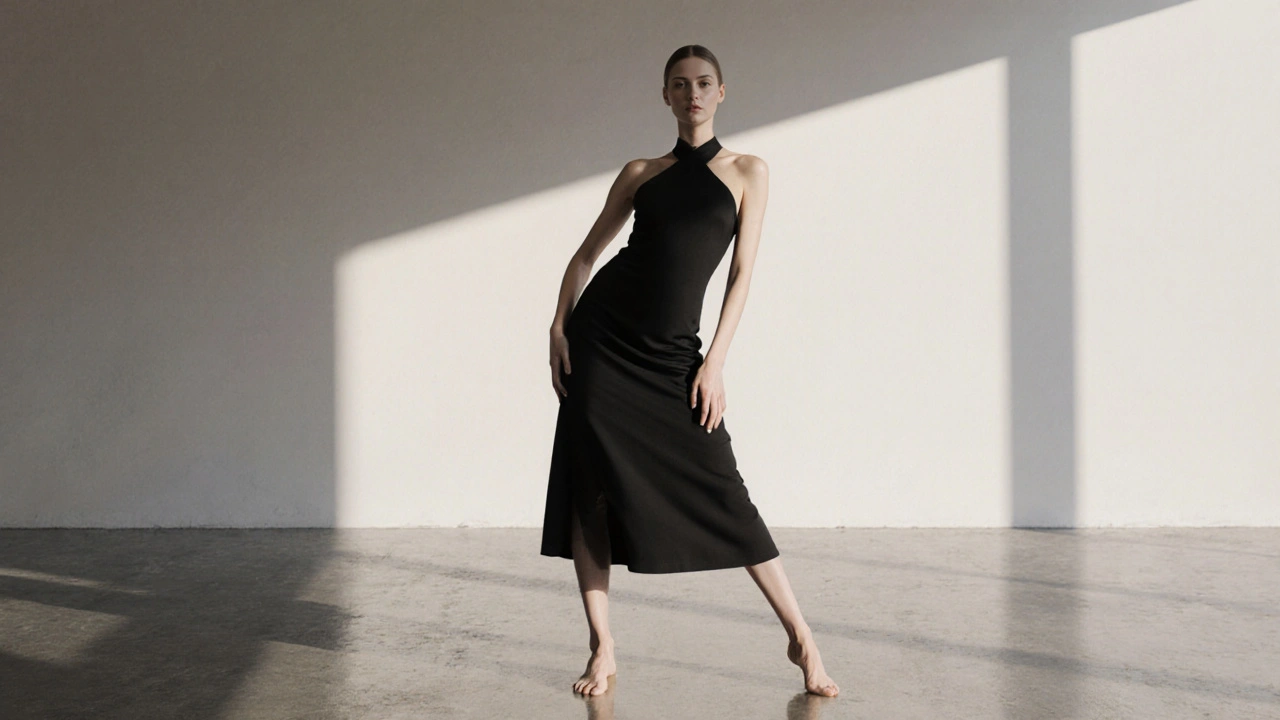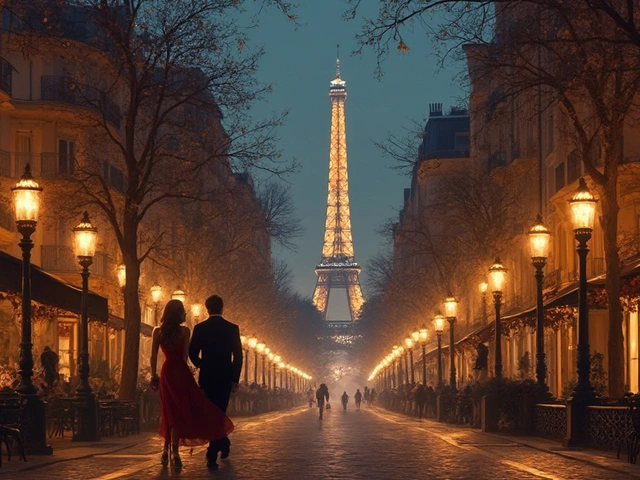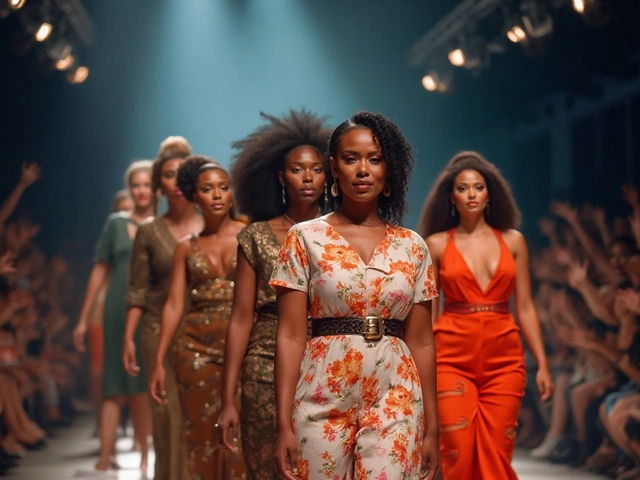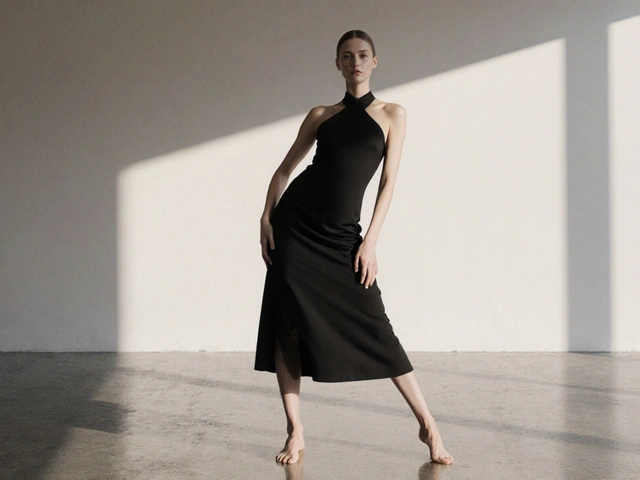Want to look like you were born on a runway? It’s not magic. It’s muscle memory, timing, and knowing exactly how to use your body to sell a look. The best fashion models don’t just stand there-they tell a story with every shift of the hip, every tilt of the head, every flick of the wrist. And if you’re not nailing your poses yet, you’re leaving money on the table.
Why Posing Isn’t Just About Looking Good
Modeling agencies don’t hire you because you’re pretty. They hire you because you can turn a $2,000 dress into a $20,000 moment. That’s the power of posing. A great pose doesn’t just show the clothing-it sells the lifestyle, the attitude, the emotion behind the brand.
Think about it: when you see a campaign for a luxury brand, do you notice the fabric? Or do you feel the confidence, the edge, the mystery? That’s what your pose creates. It’s not about copying Instagram trends. It’s about mastering the language of visual storytelling.
Top photographers don’t want you to smile. They want you to communicate. A slight arch in the back. A hand resting just above the hip. A gaze that doesn’t quite meet the lens. These aren’t random moves. They’re tools.
The Three Pillars of Professional Posing
Every powerful pose, whether for editorial, runway, or commercial work, is built on three foundations: line, balance, and tension.
Line is the shape your body creates. Think of it like drawing with your silhouette. A strong line flows from your shoulder, down your arm, through your waist, and into your leg. Avoid broken lines-like elbows sticking out at 90 degrees or knees bent awkwardly. Smooth curves and elongated angles make you look taller, leaner, and more dynamic.
Balance isn’t about standing still. It’s about weight distribution. If you’re leaning forward, your back foot should be on the ball of the foot to keep you from falling. If you’re twisting your torso, your hips need to counterbalance. Unbalanced poses look sloppy. Controlled imbalance looks intentional.
Tension is what separates a model from a mannequin. It’s the subtle engagement in your core, the slight clench of your glutes, the controlled breath that keeps your muscles alive. You’re not rigid-you’re ready. Like a sprinter at the blocks. Even when you’re standing still, your body is humming with energy.
Essential Poses Every Fashion Model Should Know
There are no magic poses. But there are 5 foundational ones that appear in 80% of high-fashion shoots. Master these, and you’ll never walk into a casting empty-handed.
- The S-Curve - Stand with one foot slightly forward. Shift your weight to the back leg. Drop your hip on that side, lift the opposite shoulder, and let your head tilt gently toward the lifted shoulder. Your arms should follow the curve-elbow bent, hand resting near your waist or hip. This pose elongates your torso and creates natural flow. Used in everything from Vogue spreads to luxury lingerie campaigns.
- The Over-the-Shoulder Look - Turn your body 3/4 away from the camera. Look back over your shoulder, but don’t twist your neck too hard. Keep your spine long. One hand can brush your hair back, the other can rest lightly on your hip. This pose works for long coats, flowing dresses, and editorial beauty shots. It adds mystery without being dramatic.
- The Lean and Reach - Stand with one leg extended slightly behind you, toe pointed. Lean your upper body forward from the hips, arms reaching out as if grabbing air. Keep your back flat. This pose screams movement, even when you’re standing still. Perfect for wind-blown fabric, sporty looks, or dynamic streetwear.
- The Seated Power - Sit on the edge of a chair or stool with one leg bent, foot flat on the floor, the other leg extended. Lean forward slightly, hands resting on your knee or thigh. Keep your spine tall. Don’t slump. This pose shows off leg lines and gives you control over your upper body. Ideal for fall collections and editorial interviews.
- The Walk-Stop - This isn’t a static pose, but it’s critical. At the end of a runway walk, freeze mid-stride. One foot forward, arms swinging naturally, head up, eyes forward. Don’t smile. Don’t stiffen. Just stop. The camera catches the momentum. It’s the most photographed moment in fashion. Practice it until it feels like breathing.
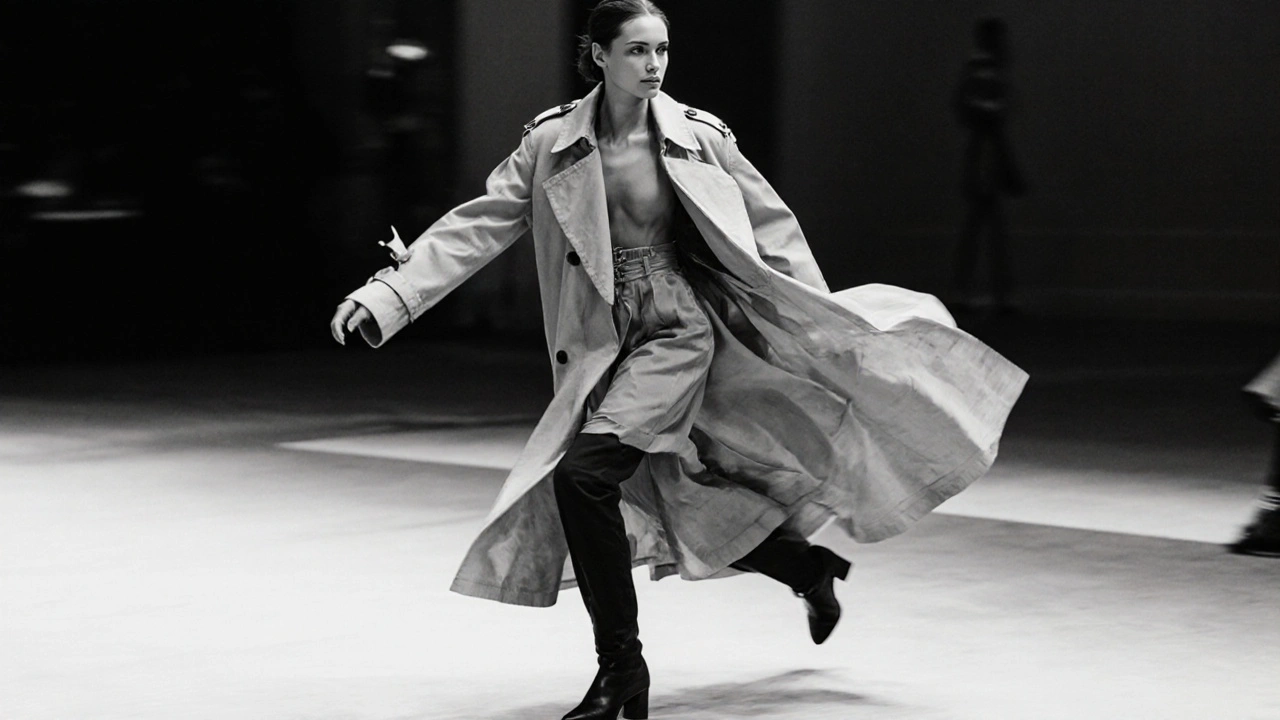
What to Avoid at All Costs
Even the most experienced models mess up sometimes. Here are the top five mistakes that scream "amateur" to photographers and clients:
- Dead eyes - Staring blankly at the lens kills the mood. Your eyes need direction. Look at the horizon, at your hand, at the edge of the frame. Even looking slightly above the camera adds depth.
- Locking your knees - It flattens your legs and makes you look stiff. Keep a micro-bend. It’s more natural, more powerful.
- Over-posing - No one wants to see you contort like a pretzel. Subtlety wins. A slight tilt, a half-smile, a finger brushing your collarbone-these are more compelling than a full-body twist.
- Ignoring the clothes - Your pose should enhance the garment, not fight it. If it’s a structured blazer, keep your shoulders square. If it’s a flowing gown, let your movement be soft. The fabric should tell half the story.
- Forgetting your feet - Feet are the foundation. Pointed toes? Flat feet? Crossed ankles? They all change the vibe. Always check your foot position in the mirror before a shoot. It’s the first thing photographers notice.
How to Practice Like a Pro
You wouldn’t train for a marathon without running. So why practice posing any less?
Start with a mirror. Every morning, spend 10 minutes in front of it. Pick one pose. Hold it for 30 seconds. Then change. Do this for 7 days. You’ll feel your muscles remember the shapes before you even think about them.
Record yourself. Use your phone. Watch the footage back. Notice where you fidget. Where your posture collapses. Where your eyes lose focus. Fix those moments. Repeat.
Study the greats-not just the faces, but the lines. Look at Naomi Campbell’s shoulder angle in the 90s. Look at Gigi Hadid’s walk-stop. Look at Adut Akech’s stillness. What makes their poses unforgettable? It’s not the makeup. It’s the control.
Work with photographers. Even if it’s a trade-for-prints gig. Real shoots teach you things no mirror ever will. Light changes everything. A shadow on your side can make your waist look smaller. A backlight can turn your hair into a halo. You learn to pose with the light, not just for it.

When to Break the Rules
Rules are your foundation, not your cage. The best models know when to bend them.
Some campaigns want weird. Some want raw. Some want uncomfortable. That’s when you ditch the S-curve and go full avant-garde. Bend your arm backward. Twist your neck unnaturally. Look directly into the lens with zero expression. That’s not a mistake. That’s art.
But here’s the catch: you can’t break the rules unless you know them. Practice the classic poses until they’re automatic. Then, when the director says, "Do something unexpected," you won’t freeze. You’ll have the tools to create something new.
Final Thought: It’s Not About Being Perfect
There’s no such thing as a perfect pose. There’s only a pose that fits the moment. The most powerful models aren’t the ones who look the most polished. They’re the ones who feel the most alive in front of the camera.
So stop chasing the "right" pose. Start chasing the right feeling. Confidence isn’t something you fake. It’s something you build-through repetition, through observation, through showing up even when you’re tired.
The next time you walk into a studio, don’t ask yourself: "What pose should I do?" Ask: "What story am I telling?" The rest? It’ll follow.
How do I stop looking stiff in photos?
Stiffness comes from holding your breath or tensing up. Breathe deeply before each pose. Let your shoulders drop. Keep a slight bend in your knees. Move slowly between poses instead of snapping into position. Think of your body as fluid, not frozen. Practice in front of a mirror with music playing-it helps you move naturally.
Do I need to be tall to be a fashion model?
Traditionally, yes-runway models are often 5’9” or taller. But the industry is changing. Editorial, commercial, and streetwear campaigns now regularly cast models of all heights. What matters more than height is proportion, presence, and how well you carry the clothing. Many top agencies now have "petite" and "commercial" divisions specifically for models under 5’8".
How do I find good photographers to practice with?
Start local. Check Instagram hashtags like #BristolModelTFP or #LondonPhotographyCollab. Join Facebook groups for emerging models and photographers in your city. Offer a TFP (Time for Print) arrangement: you give your time, they give you high-res images. Be clear about what you want-editorial, beauty, or lifestyle shots. Build a small portfolio, then use it to attract better opportunities.
What should I wear to a modeling casting?
Simple, clean, and fitted. White or black tank top, plain denim jeans, and bare feet or simple flats. No logos, no accessories, no makeup. The goal is to show your natural shape, posture, and bone structure. Agencies want to see the canvas, not the outfit. Bring a neutral expression and stand tall.
How long does it take to get good at posing?
You’ll notice improvement in 2-3 weeks with daily practice. But true mastery takes months. The difference between a good model and a great one isn’t talent-it’s consistency. The models who book the most jobs are the ones who show up ready, every time, no matter how tired they are. Practice isn’t optional. It’s part of the job.
